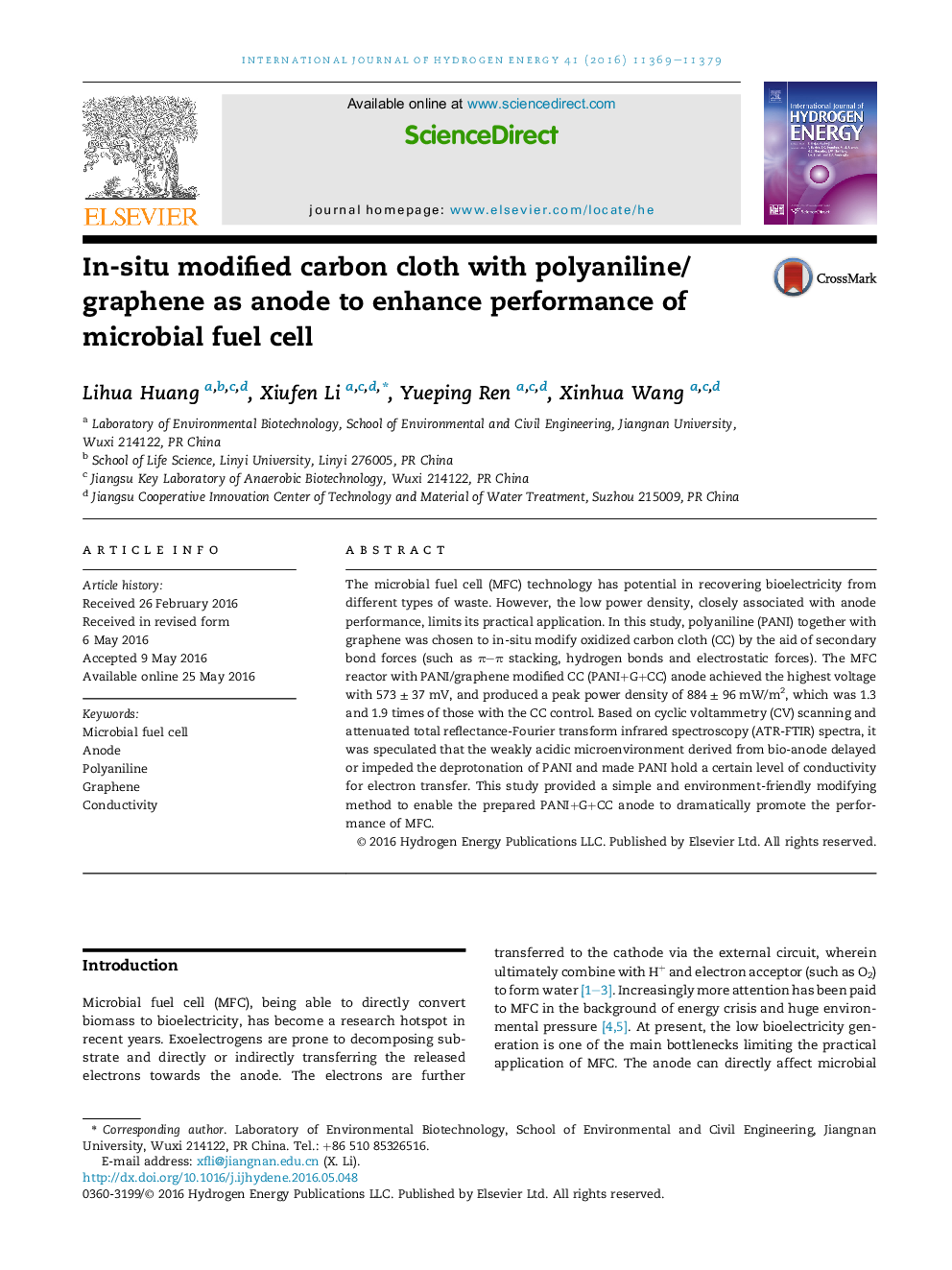| Article ID | Journal | Published Year | Pages | File Type |
|---|---|---|---|---|
| 1269569 | International Journal of Hydrogen Energy | 2016 | 11 Pages |
•A simple and environment-friendly method for PANI/graphene modified carbon cloth.•PANI/graphene modified carbon cloth enhanced bioelectricity generation.•The deprotonation of PANI was impeded by bio-anodes.•PANI maintained conductivity for electron transfer in MFC anolyte (pH = 7).
The microbial fuel cell (MFC) technology has potential in recovering bioelectricity from different types of waste. However, the low power density, closely associated with anode performance, limits its practical application. In this study, polyaniline (PANI) together with graphene was chosen to in-situ modify oxidized carbon cloth (CC) by the aid of secondary bond forces (such as π–π stacking, hydrogen bonds and electrostatic forces). The MFC reactor with PANI/graphene modified CC (PANI+G+CC) anode achieved the highest voltage with 573 ± 37 mV, and produced a peak power density of 884 ± 96 mW/m2, which was 1.3 and 1.9 times of those with the CC control. Based on cyclic voltammetry (CV) scanning and attenuated total reflectance-Fourier transform infrared spectroscopy (ATR-FTIR) spectra, it was speculated that the weakly acidic microenvironment derived from bio-anode delayed or impeded the deprotonation of PANI and made PANI hold a certain level of conductivity for electron transfer. This study provided a simple and environment-friendly modifying method to enable the prepared PANI+G+CC anode to dramatically promote the performance of MFC.
Graphical abstractFigure optionsDownload full-size imageDownload as PowerPoint slide
